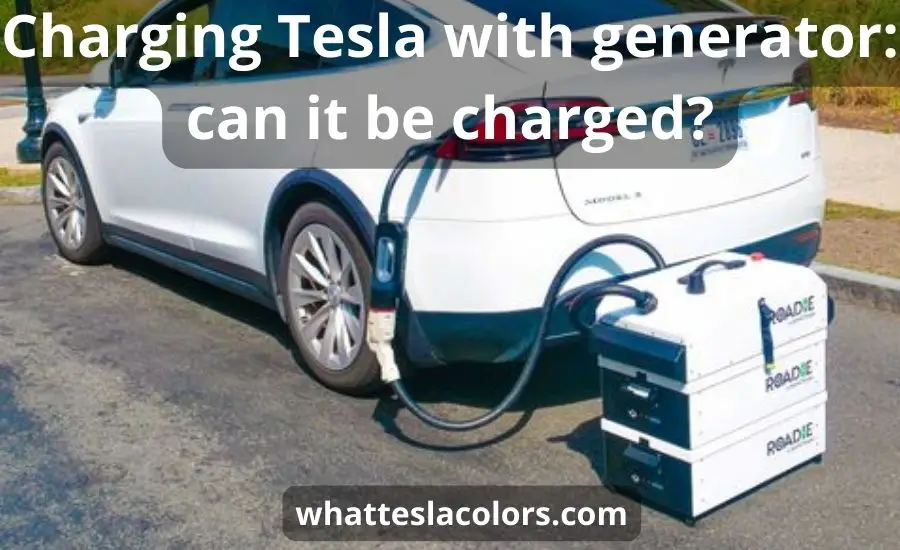It is possible to charge a Tesla with a generator, but it is not recommended for regular use. Generators are typically noisy, produce emissions, and are less efficient than charging from a dedicated charging station or a home electrical outlet. You can use it when there’s a power outage.
If you need to charge your Tesla with a generator, the generator must be able to deliver the power sufficient to match Tesla’s charging rate. The Tesla Model S has a maximum generator charge rate of 16.5 kW, while the Model 3 and Model X have a maximum generator charge rate of 11.5 kW.
To use enough power to charge your Tesla, you will need a generator with a minimum output of 10 kW, a high-quality inverter, and a dedicated charging cable for your Tesla. It is recommended that you consult with a qualified electrician and Tesla expert to ensure your setup is safe and effective.
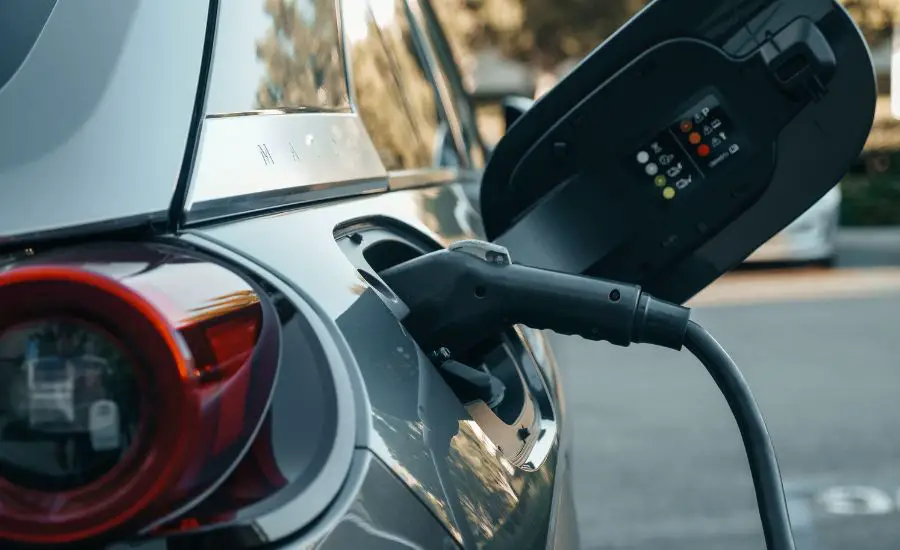
Contents
- 1 Conventional ways of charging electric cars
- 2 How does Tesla charging work?
- 3 Tesla charging adapters
- 4 Recharge an electric car from a backup battery or generator?
- 5 Is it possible to charge a Tesla with a generator?
- 6 Portable generators for charging Tesla
- 7 ZipCharge go
- 8 Is a backup power source practical for your electric vehicle?
- 9 What generators for Tesla cars can you find on the market?
- 10 What specifications does a generator need to charge a Tesla?
- 11 FAQ
- 12 Conclusions
Conventional ways of charging electric cars
There are regular methods to charge your Tesla.
Home charging electric cars
The most convenient and cost-effective way to charge a Tesla with onboard inverters and mobile connector is by using a standard household outlet.
This method is called Level 1 charging, and it can take up to 48 hours to fully charge a Tesla.
However, most people will only need to charge for a few hours each night to top up their battery.
Tesla wall connector
The Tesla Wall Connector is a Level 2 charging station that can be installed in your home or place of business.
This method can charge a Tesla up to 44 miles per hour, and it takes about 6 hours to fully charge a Tesla from a Wall Connector.
Supercharger electric cars
Tesla’s Supercharger network is a series of high-speed DC charging stations located across the world. Superchargers can charge a Tesla up to 80% in about 30 minutes.
However, they are not the most cost-effective way to charge a Tesla, as they cost more per kWh than other charging methods.
Destination charging
Destination Charging is a network of Level 2 charging stations located at destination points such as hotels, restaurants, and parking garages.
While this method is slower than Supercharging, it is a convenient way to leave your Tesla charging while you’re away.
Public charging stations
Public charging stations are scattered around the globe, including Level 2 and Level 3 (DC Fast Charging) stations.
These stations can charge a Tesla up to 80% or more in under an hour, depending on the charging station with onboard inverters and mobile connector. However, be aware that there may be a fee for using public charging stations.
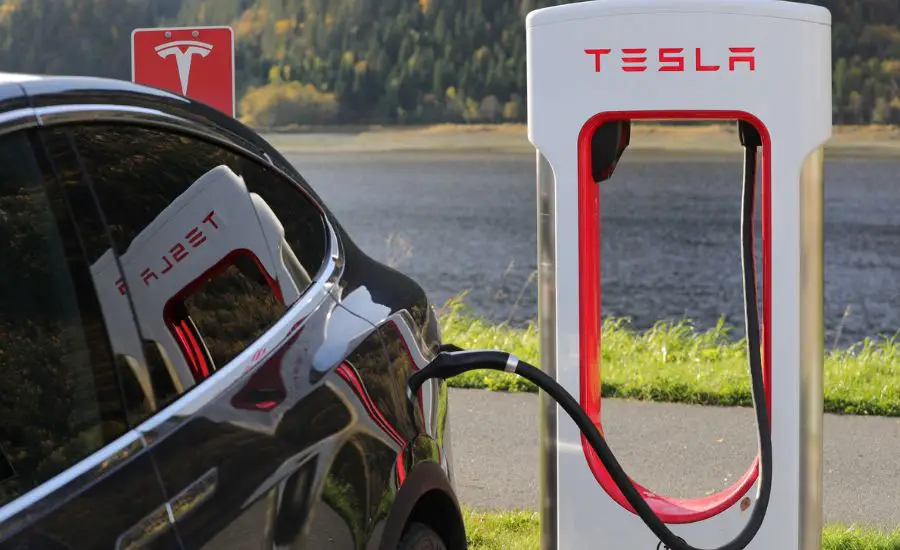
How does Tesla charging work?
Tesla charging uses electricity to power the car’s batteries. There are two main ways to charge a Tesla:
- Charging at home: Tesla owners can purchase a home charging station, which can be installed in a garage or driveway. The station is connected to a power source and the car is plugged into the station, which charges the batteries.
- Charging at a supercharger station: Tesla has a network of over 25,000 Supercharger stations around the world. These stations are designed to provide rapid charging for Tesla vehicles and can charge a car’s batteries to 80% capacity in about 30 minutes.
When charging at a Supercharger station, the Tesla driver can simply pull up to a designated parking spot and plug the car in. The Supercharger communicates with Tesla’s onboard computer to ensure the battery is charged safely and efficiently.
Tesla charging is easy and convenient and helps ensure that Tesla drivers can always have the energy they need to get where they’re going.
Tesla charging adapters
There are Tesla charging adapters:
- NEMA 5-15 (standard US household outlet) adapter – this allows Tesla owners to charge their vehicles using common 120-volt power outlets. It’s not the fastest charging option, but it’s convenient for emergencies.
- NEMA 14-50 adapter – this adapter is commonly seen at RV parks, conventional parks, and camping grounds. It can provide up to 40 amps of charging power and offers a faster charging rate than the NEMA 5-15 adapter.
- J1772 adapter – this adapter is used at many Level 2 charging stations you find in public places. The J1772 adapter lets Tesla owners charge at a public charging station that supplies a J1772 connector, providing up to 30 amps of power outlets.
- CHAdeMO adapter – this adapter enables Tesla owners to charge at Level 3 DC fast charging stations. It charges up to 50 kW, giving Tesla owners around 170 miles of range per hour of charging. It has more than enough power.
- CCS adapter – this adapter is similar to the CHAdeMO adapter, but it works with public charging stations that have the CCS connector. Tesla owners can charge up to 150 kW, which is a good option for those on long road trips who need a fast charge. It has more than enough power.
Recharge an electric car from a backup battery or generator?
It is possible to power up a car using a backup battery or a generator as enough power. A backup battery system can be installed in the car, which can charge a Tesla using solar panels or a power outlet.
This can be used to charge the car’s main battery or power the car directly.
Similarly, a generator can also be used to charge the car’s battery through a charging port. However, it is important to note that the use of generators or backup batteries may not be as efficient or environmentally friendly as charging directly from a power outlet or a charging’s station.
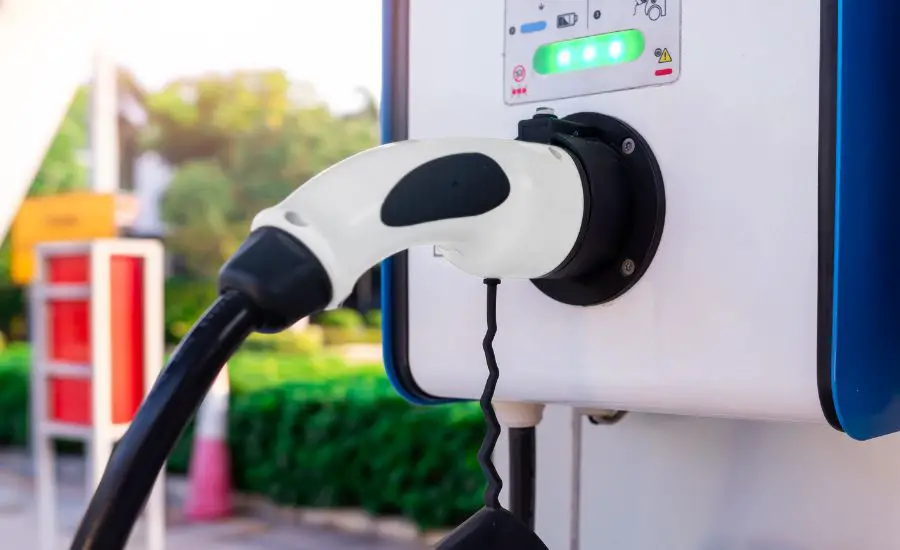
Is it possible to charge a Tesla with a generator?
In short, the answer is affirmative. Despite lacking the capacity to offer DC and other advanced charging features similar to conventional power sources, generators can generate charging power ranging from 110V to 240V.
They can be beneficial for recharging a Tesla during power outages, camping, or living off-grid, as many generators can produce sufficient power for this purpose.
To charge a Tesla: available generators
Several types of generators can be used to charge a Tesla.
Gasoline generators or diesel generators
Diesel generators are the most common types of generators and can be easily found in hardware stores. Gasoline generators and diesel generators can provide enough power to charge a Tesla, but are not as efficient as some of the other options. Also, it is not a portable generator.
Solar-powered generator
These generators use solar panels to capture energy from the sun and convert it into electrical energy. They are clean and can be used anywhere there is sunlight, making them a popular choice for outdoor activities or camping.
Wind-powered generator
This is not a portable generator that uses wind turbines to generate electricity. They are a clean and renewable source of energy but require consistent wind speed to work effectively.
Hydrogen-powered generator
This gas-powered generator engages hydrogen fuel cells to generate electricity. They are a clean and efficient source of energy, but are currently expensive and not widely available.
Propane-powered generator
These generators use propane gas to generate electricity.
They are a clean and reliable source of energy but require a steady supply of propane to work properly.
Also, it is not a portable generator.
Natural gas generators
Compressed natural gas generators are generators that use natural gas as their fuel source to produce electricity. Natural gas generators work by burning natural gas to generate heat, which is then used to drive a turbine that produces electricity.
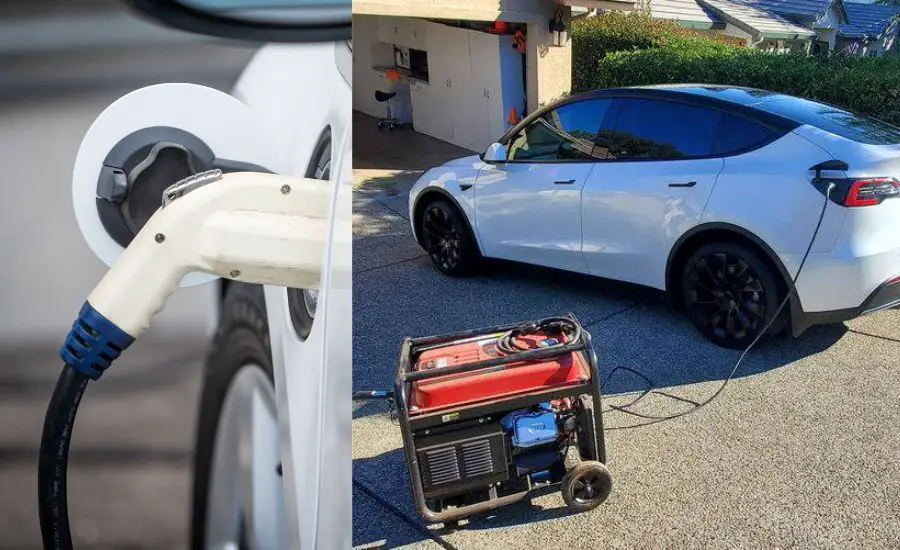
The ideal generator for replenishing a Tesla’s battery
The best generator to charge a Tesla depends on the specific needs of the individual. If you are looking for a portable generator for your Tesla, some popular options include the Honda EU2200i and the Jackery Explorer 1000. These generators are quiet, efficient, and powerful enough to charge your Tesla while on the go.
If you are looking for a stationary generator, a popular option is the Generac Guardian Home Standby Generator. This generator can power your entire home in the event of a power outage, and it can also be configured to charge your Tesla.
Ultimately, the best generator to charge a Tesla will depend on your specific needs and budget. It is important to do your research and choose a reliable and efficient generator that will meet your needs.
Portable generators for charging Tesla
Currently, there is no charging station or small portable generators enough for an electric car that can fit in the trunk. Portable generators pose some inconvenience for electric car drivers.
Portable generators are highly recommended to use the appropriate and compatible charging infrastructure and equipment provided by Tesla to ensure the safety and optimal performance of the electric vehicle.
Attempting to use portable generators may result in damage to the vehicle’s battery, and electrical system, and pose a significant risk to personal safety. Please follow the manufacturer’s recommendations for portable generators and guidelines for charging your electric vehicle.
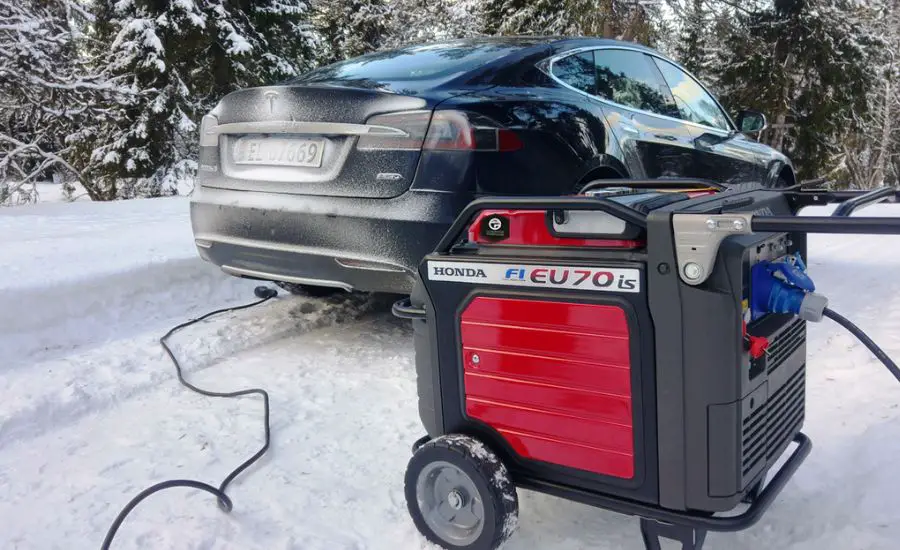
ZipCharge go
ZipCharge Go is a portable electric vehicle charging solution that is compatible with Tesla vehicles. It is designed to provide convenient and fast charging for Tesla owners on the go, allowing them to keep their vehicles charged and ready for travel anywhere.
The ZipCharge Go features a compact and lightweight design, making it easy to carry and use anywhere. It is equipped with a Level 2 charging connector that is compatible with Tesla vehicles, allowing for faster charging compared to standard Level 1 charging.
The charging device is also easy to use, with a simple plug-and-play design that requires no installation or additional equipment. It can be connected to any standard 240V outlet, making it convenient to use at home or on the road.
With the ZipCharge Go, Tesla owners can enjoy hassle-free charging anytime and anywhere, ensuring that their vehicles are always ready for their next adventure.
Is a backup power source practical for your electric vehicle?
Backup’s power for an electric’s vehicle (EV) may or may not be practical depending on the specific situation.
On one hand, having a backup’s power source for an EV can be helpful in case of power outages or emergencies.
It can allow the vehicle to continue functioning and transporting people or goods during such situations.
On the other hand, the cost and complexity of installing a backup power source, such as a home battery system or generator, may not be worth it for some individuals. Additionally, the range of most EVs has greatly improved over recent years, meaning they can typically handle regular daily commuting without needing backup power.
What generators for Tesla cars can you find on the market?
Here are some types of common generators available in the market:
- Conventional Generators
- Inverter Generators
- Portable Generators
- Standby Generators
- Solar Generators
- Wind Turbine Generators
- Diesel Generators
- Gasoline Generators
- Propane Generators
- Also compressed natural gas generators
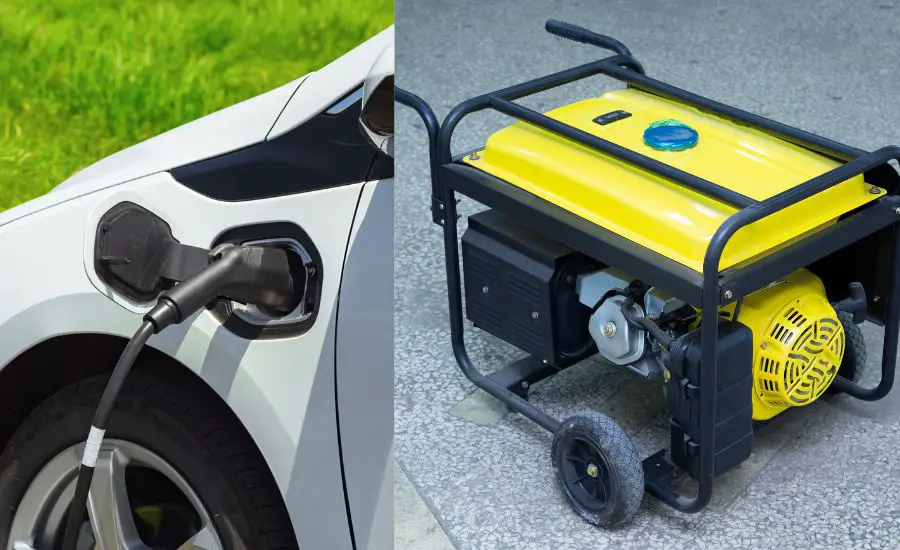
What specifications does a generator need to charge a Tesla?
An alternator wouldn’t be able to charge a Tesla because it requires a specific type of charger called a Level 2 charger. The Tesla Model S and Model X vehicles come with an adapter that allows the vehicle to connect to a Level 2 charger, which typically operates at 240 volts and provides a charging rate of between 20 and 80 miles per hour of charge, depending on the charger’s output.
The Tesla Model 3 and Model Y can also use a Level 2 charger, but they come with a built-in charger that can plug into a standard 120-volt household outlet, although this method is much slower than a Level 2 charger.
Conventional generator types
The prices of non-inverter generators vary based on the type of outlet they have (L5-30 and L14-30), but that’s not what we require. The Tesla gas generators that suit our needs predominantly feature NEMA 5-20 outlets (which can use the regular 5-15 plug). L5-20 and TT-30 outlets are not as prevalent, and L14-30 outlets are even less common.
NEMA 5-20 outlets can provide power at a maximum rating of 20 amps, 120 volts, and 2400 (1920) volts, and can fuel your Tesla for a few miles. They are a dependable power source for urgent situations where you need to reach the closest to you power plant, but they won’t last for a few days.
Since Tesla cars use specialized outlets, their connections move to become compatible with NEMA outlets. Older Tesla models utilized 14-50 and 5-15 connections. At the same time, more recent models can only use Gen 2 and Nema 5-15 outlets (which can use Nema 5-20 outlets).
Securing a fast charge
Using the MPH parameter, what is the estimated charging time for the Tesla Model 3 after one hour of charging from a specific outlet?
To charge the battery up to 60%, it is suggested to utilize the appropriate generator for a minimum of 15 hours.
Power restriction and adequate charge
In a workplace setting, establish a boundary for the amount of electricity used to initiate the charging of your car. Begin with the smallest possible amount and gradually raise it to 20 amps (or higher, based on the type of portable generator) within a few minutes.
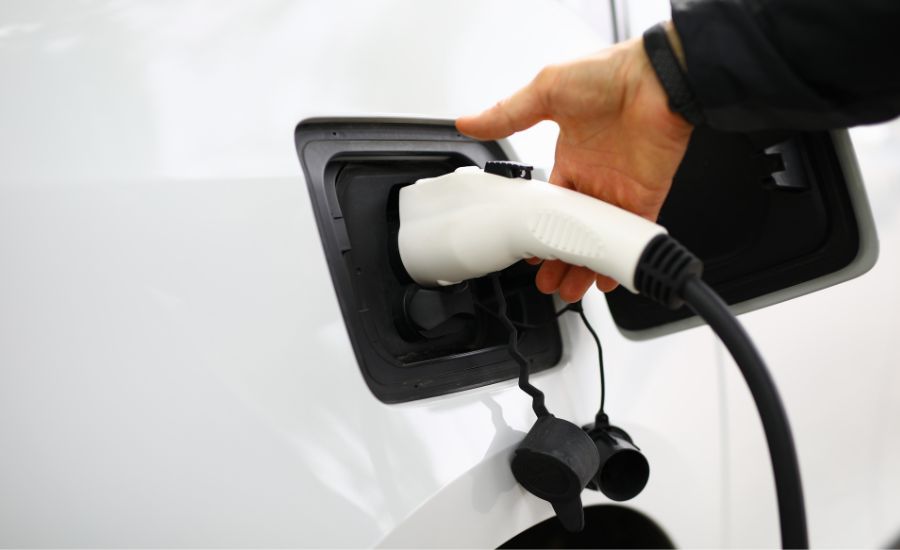
FAQ
Can you charge an electric car battery with a gas generator?
Yes, it is possible to charge your Tesla battery with a gas generator by using a portable charging kit that converts the generator’s AC power output to DC power that can be used to charge the car’s battery.
AC power must be converted to direct current. However, this method is not recommended as it is less efficient and can produce emissions that contribute to environmental pollution.
Is there a portable charger for Tesla?
No, there is no portable charger for Tesla vehicles that can be carried around. Tesla vehicles require a high voltage level of charging, and their charging stations can only be found at specific locations.
However, Tesla does offer a portable charging cord that can be used with a standard 120V household outlet or a 240V outlet with a compatible adapter. These cables are meant for emergency use or occasional charging and have limited charging speeds. However, not all generators can accept these cables.
Conclusions
A replacement method to charge your Tesla is, among others, a generator. Here are the main findings:
Most generators that transform mechanical energy into electricity (known as a generator), are frequently utilized as a secondary power source. Opting to power your Tesla vehicle using most generators that transform mechanical energy into electrical energy, known as a generator, is frequently utilized as a secondary power source.
Opting to power your Tesla vehicle using a generator guarantees that you can take a journey without concern over charging locations, saves you money, lessens your carbon footprint, and offers emergency power.
To utilize this technology, you must determine how much energy your Tesla necessitates, acquire an appropriate available generator, connect the generator to a cable to charge your Tesla, and allow it to operate until your automobile is fully charged.
Do not let an absence of charging sites prevent you from relishing the perks your Tesla supplies: employ a generator and indulge in the convenience of powering your vehicle whenever and wherever you please.
However, it is important to note that generators typically produce electricity using non-renewable resources such as gasoline or diesel, which can increase your carbon footprint.
Additionally, not all generators use gasoline or diesel. Thus, utilizing a generator as a primary source of power for your Tesla is not recommended.
Ultimately, the best solution for powering your Tesla is to utilize renewable energy sources such as solar or wind power. It guarantees that you can journey without concern over charging locations, save your money, lessen your carbon footprint, and obtain emergency power.
Thus, utilizing a generator as a primary source of charge for your Tesla is not recommended and should only be considered as a backup option in emergencies. Ultimately, the best solution to charge your Tesla is to utilize renewable energy sources such as solar or wind power.

